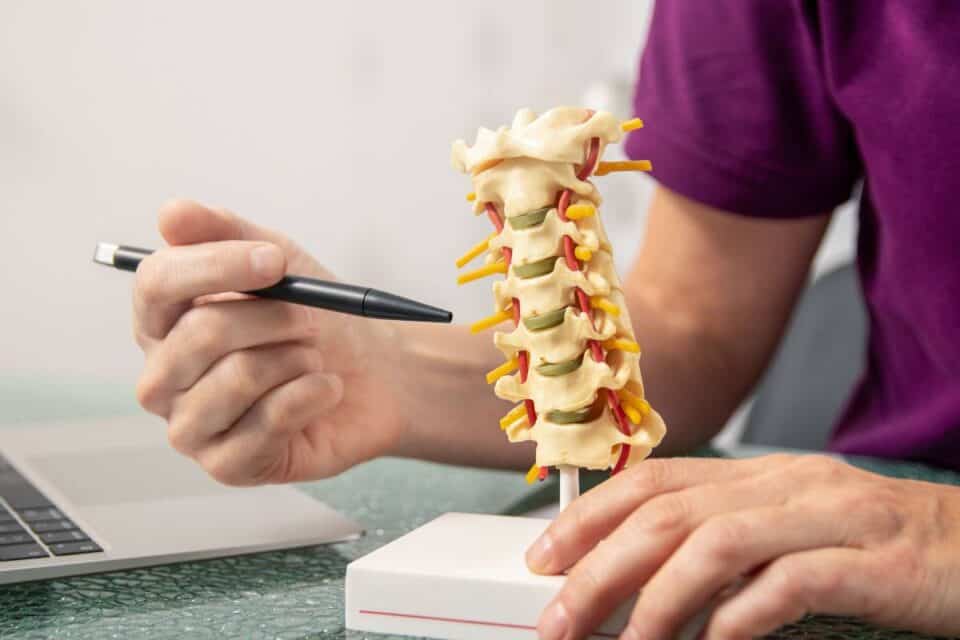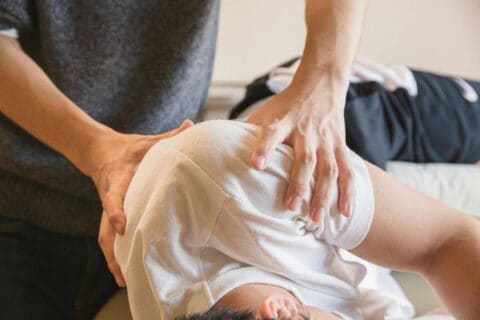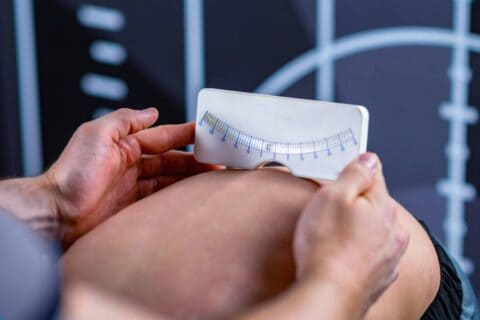I see it every day in my practice – the way back pain changes lives. Maybe you’re struggling to play with your kids, feeling frustrated at work, or just missing out on the activities you love. After months and years of treating patients who thought they’d tried everything, I understand your search for answers.
Today, I want to talk about Adjacent Segment Disease (ASD) and share some solutions that might change your perspective on spinal health – and get you back to living the life you deserve.
Key Takeaways
- Adjacent Segment Disease (ASD) affects up to 84% of patients radiologically after spinal fusion surgery
- The condition typically develops at a rate of 2-3% per year following spinal procedures
- Non-surgical alternatives like SpineMed can help prevent ASD and its complications
Is SpineMed Your Path to a Pain-Free Life?
Tired of living with back pain? Take our quick quiz to see if you’re a candidate for the breakthrough SpineMed Treatment. It only takes a few minutes to potentially change your life.
Understanding the Basics
The human spine is designed for natural movement, with each vertebra and intervertebral disc working together harmoniously. When spinal fusion surgery disrupts this natural balance by using bone grafts and hardware to fuse vertebrae, it can lead to increased stress to adjacent levels. This is particularly concerning in highly mobile areas of the spine like the cervical region (neck) and lumbar region (lower back).
When I explain ASD to my patients, I often use a simple analogy: imagine your spine as a row of building blocks. When we fuse some of these blocks (as in spinal fusion), the blocks above and below have to work harder to maintain flexibility. This extra stress can lead to ASD.
I’ve observed that the statistics are quite telling:
- 2-14% of patients develop ASD in the lumbar spine region
- By 10 years post-surgery, the rate reaches an alarming 38%1
- Radiological changes are seen in 36-84% of cases2
Risk Factors: What You Need to Know
From my clinical experience and recent research findings, here are several risk factors for Adjacent Segment Disease:
- Age and Physical Factors
- Higher body mass index (BMI)
- Advanced age
- History of smoking
- Hypertension
- Surgical Factors
- Long-segment fusion
- Superior facet violation
- Post-operative alignment issues
3One particularly interesting study I recently reviewed showed that after posterior lumbar fusion surgery, about 18.6% of patients developed ASD. This finding has significantly influenced how I approach treatment recommendations.
Symptoms and Diagnosis
In my daily practice, I see a wide spectrum of ASD symptoms. The most telling sign is often when patients describe pain that’s different from their original symptoms before fusion. What’s fascinating about ASD is how it creates a distinct pattern of discomfort.
Patients typically experience a combination of localized pain and radiating symptoms, which I’ve learned to recognize as key indicators of adjacent segment degeneration.4
The diagnosis requires a methodical approach. I’ve found that combining a thorough physical examination with advanced imaging gives us the most complete picture.
When we detect nerve compression5, it often presents various symptoms that can significantly impact daily life.
| Symptom Category | Common Manifestations | Clinical Significance |
|---|---|---|
| Pain Patterns | • Localized back pain • Radiating limb pain • Morning stiffness | Often the first indicator of ASD |
| Neurological Signs | • Radiculopathy • Myelopathy • Numbness/tingling | Indicates nerve involvement |
| Movement Issues | • Reduced range of motion • Facet joint pain • Difficulty with daily activities | Shows functional impact |
| Progressive Symptoms | • Increasing pain intensity • Spreading pain patterns • New areas of discomfort | Suggests disease progression |
Through careful evaluation of these symptoms and comprehensive diagnostic imaging (MRI and radiographs), we can develop a clear picture of how ASD is affecting each patient. This understanding is crucial for developing an effective treatment plan that addresses both immediate symptoms and long-term spinal health.
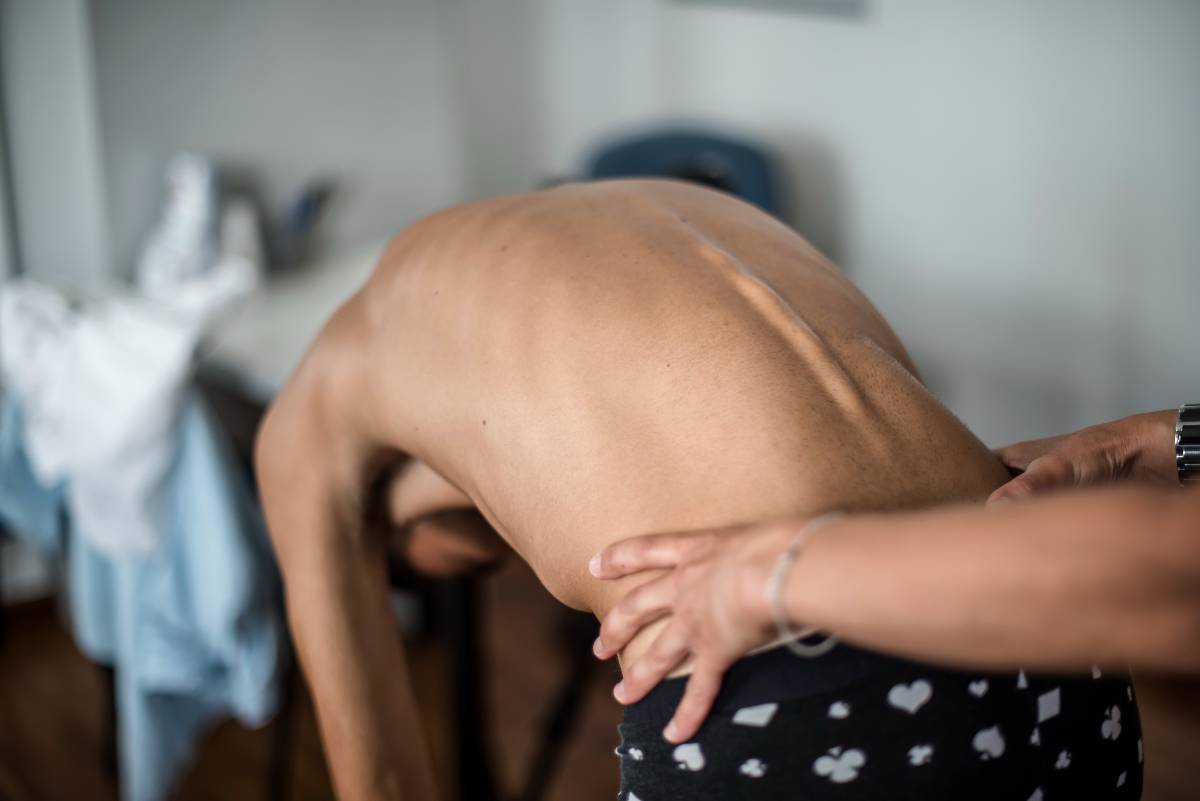
Why Consider Alternatives to Spinal Fusion?
When facing spinal issues, many patients are immediately presented with spinal fusion as their primary option. However, understanding the long-term implications of this surgery is crucial for making an informed decision about your spinal health.
The Hidden Cost of Spinal Fusion: Adjacent Segment Disease
Research shows that patients develop radiological signs of Adjacent Segment Disease after spinal fusion surgery6. This concerning statistic highlights how fusion surgery, while sometimes necessary, can trigger a cascade of new problems in surrounding spinal segments. The rigid nature of fused vertebrae forces adjacent segments to compensate, leading to accelerated wear and tear.
Modern Treatment Approaches
Here’s where I’m particularly passionate about offering alternatives. While traditional approaches often default to additional surgery, I’ve seen remarkable success with conservative treatments:
Through my years of clinical experience, I’ve discovered something crucial: preventing Adjacent Segment Disease (ASD) is far more effective than treating it after it develops. I’ve consistently observed that patients who maintain optimal spine mechanics and embrace healthy lifestyle habits significantly reduce their risk of developing degenerative disc disease or ASD – a condition that radiologically affects up to 84% of post-fusion patients.
Let me explain how your spine alignment and daily habits directly influence your long-term spinal health. I’ve found that structural stability starts with proper posture and mindful attention to how we move and care for our spine. Over time, I’ve developed a comprehensive prevention strategy that addresses both mechanical and lifestyle factors influencing adjacent segment degeneration.
Biomechanical Optimization
When it comes to optimizing biomechanics, I emphasize the importance of maintaining proper spinal alignment during all daily activities. This means being conscious of your posture while following ergonomic principles both at work and home. I teach my patients specific lifting techniques that protect their adjacent vertebrae, and we regularly assess their range of motion and flexibility.
Physical Conditioning
Physical conditioning plays a crucial role in prevention.7 I guide my patients through core strengthening exercises that support spine stability and recommend low-impact activities to maintain disc height. We focus on targeted stretches that promote neural foramina health, and I’ve found that balance training significantly improves overall posture.
Lifestyle Modifications
Lifestyle changes are equally important8. I work with patients on weight management strategies to reduce load distribution stress on their spine. For those who smoke, I strongly encourage cessation since it dramatically improves disc health and blood flow. I emphasize the importance of proper hydration for optimal intervertebral and adjacent disc function, and we explore stress management techniques to reduce muscle tension.
Preventive Care
Preventive care remains at the heart of my approach. I recommend regular spinal check-ups to monitor adjacent levels and disc degeneration. This allows us to intervene early when we spot any signs of degenerative changes. When indicated, we conduct periodic radiographic assessments, and I work with patients to develop proactive pain management strategies.
Remember what I always tell my patients: prevention isn’t just about avoiding problems – it’s about creating optimal conditions for long-term spinal health. Through my experience, I’ve seen that following these guidelines and maintaining regular check-ups can significantly reduce your risk of adjacent segment disease.
I’m particularly excited to share with you my experience with the SpineMed system, a technology that has become a true game-changer in my practice for treating and preventing spinal conditions. Over the years, I’ve witnessed how this non-surgical alternative addresses the root causes of spinal problems in ways traditional methods simply cannot match.
Computerized Precision
Unlike traditional traction methods, this system employs advanced algorithms that can precisely target specific spinal segments, particularly in the lumbar region. I work closely with each patient to develop customized treatment protocols that adapt to their unique condition. What truly impresses me is the system’s ability to make real-time adjustments based on how your body responds during treatment.
Natural Healing Process
The healing process that SpineMed facilitates is remarkable. Through my clinical observations, I’ve seen how it effectively promotes disc rehydration and reduces pressure on spinal nerves. One of the most significant benefits I’ve noticed is how it helps prevent further degeneration of spinal segments while guiding the back into proper postural alignment.
Clinical Results
The outcomes I’ve seen in my practice have been nothing short of remarkable. Patients consistently report significant reductions in lumbar spinal pain, and I observe marked improvements in their mobility. What’s particularly gratifying is seeing their enhanced quality of life and how many have avoided the need for surgical intervention. The improvement in posture alone has been transformative for many of my patients.
This technology represents more than just another treatment option – it’s a revolutionary approach to spinal care that aligns perfectly with my commitment to providing the most effective, least invasive solutions for my patients. Through SpineMed, we’re not just treating symptoms; we’re addressing the fundamental issues that contribute to spinal problems while promoting long-term spinal health.
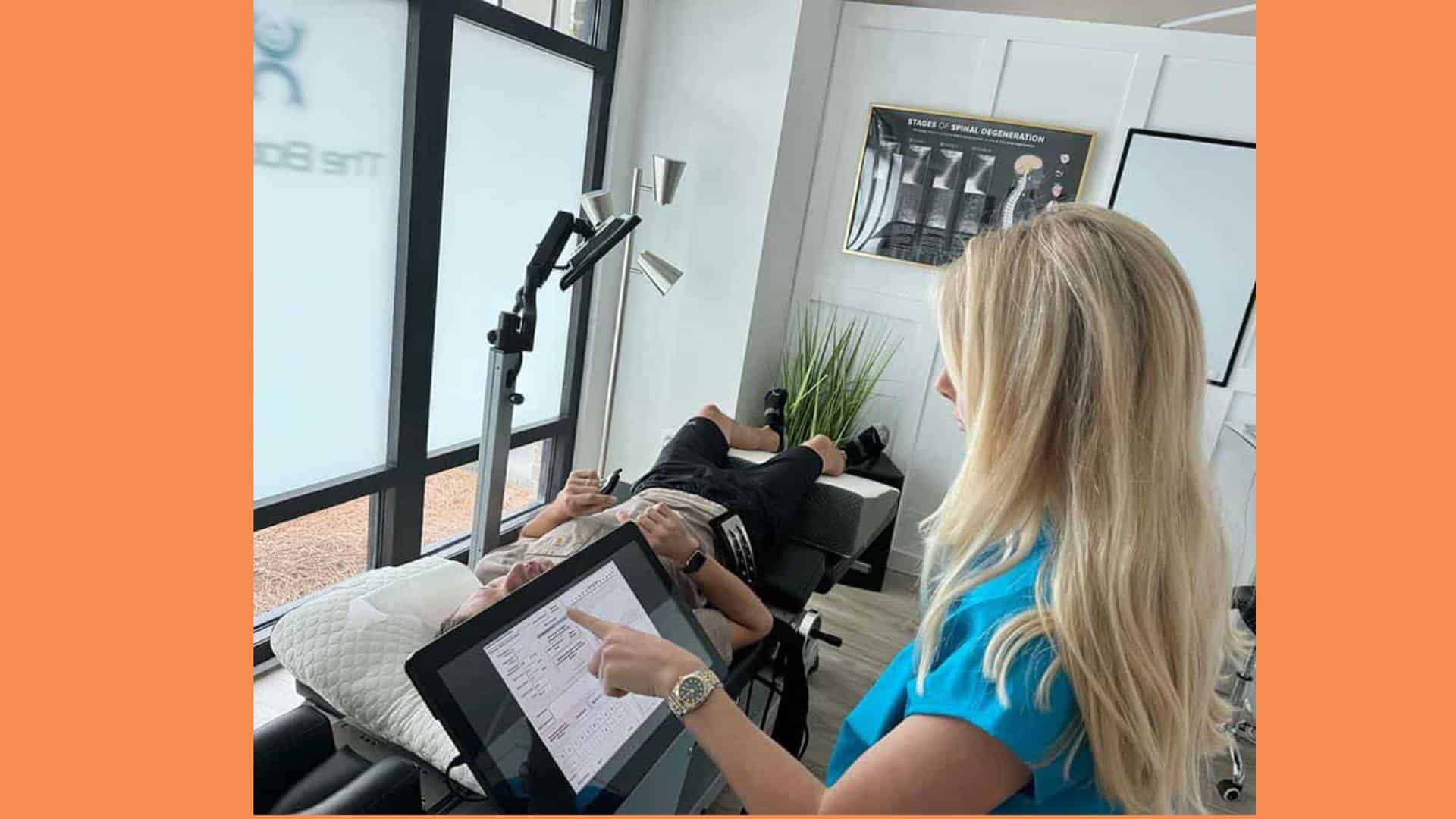
Why I Recommend SpineMed for ASD Prevention
Let me be clear in stating that if you have spinal fusions we do NOT put you on decompression. SpineMed is used for patients that are looking for a solution that doesn’t require surgery. When treating ASD patients due to spinal fusions slight traction is our best option when dealing with segments above and below the fusion. This is where SpineMed truly stands out – it allows me to precisely target affected areas without putting additional stress on the rest of your spine therefore not needing eventual spinal fusion.
When I treat patients using SpineMed, I can make real-time adjustments based on how their body responds. The technology lets me monitor and measure progress with each session, something that’s crucial for both me and my patients to track improvement. What particularly impresses me is the comfort level during treatment – no pain or discomfort that often comes with traditional traction.
For patients facing the prospect of surgery or dealing with post-surgical complications, I’ve found SpineMed to be an effective alternative. It works with your body’s natural healing processes, promoting spinal decompression and disc rehydration in a way that aligns with what I believe healthcare should be – gentle, precise, and focused on long-term healing.
Is SpineMed Your Path to a Pain-Free Life?
Tired of living with back pain? Take our quick quiz to see if you’re a candidate for the breakthrough SpineMed Treatment. It only takes a few minutes to potentially change your life.
FAQs
What is the most common cause of Adjacent Segment Disease?
How can I prevent ASD after spinal fusion?
What are the early warning signs?
How can chiropractic care help with Adjacent Segment Disease?
What makes your treatment approach different?
Conclusion
After spending over a decade treating spinal conditions, I’ve seen firsthand how spinal problems, especially Adjacent Segment Disease, can affect every aspect of your life. I understand the worry, the daily discomfort, and the uncertainty you might be feeling about your spinal health.
Do you know what’s really struck me throughout my years of practice? It’s how each person’s spine tells a different story. Whether you’re dealing with post-fusion complications, experiencing new symptoms, or simply want to maintain your spine health, I want you to know that I’m here to listen and help. Having treated thousands of patients, I’ve learned that the most successful outcomes come from truly understanding each person’s unique situation and concerns.
I’m genuinely excited about the approaches I’ve shared with you today – especially the remarkable results I’ve seen with SpineMed. But more than any single treatment, I’m passionate about finding the right solution for you.
If something’s bothering you about your spine health, or if you simply want to be proactive about prevention, I’d love to sit down with you. Come in for a consultation, and let’s have a real conversation about your concerns. Together, we’ll create a plan that makes sense for your lifestyle and goals.
Book a consultation with me – I look forward to meeting you and helping you achieve the spinal health you deserve. Trust me, taking this step today could make all the difference in your quality of life tomorrow.
- https://pubmed.ncbi.nlm.nih.gov/25839385/ ↩︎
- https://pmc.ncbi.nlm.nih.gov/articles/PMC11033273/ ↩︎
- https://josr-online.biomedcentral.com/articles/10.1186/s13018-020-02032-7 ↩︎
- https://pubmed.ncbi.nlm.nih.gov/25102498/ ↩︎
- https://www.sciencedirect.com/science/article/abs/pii/S1529943013003033 ↩︎
- https://pmc.ncbi.nlm.nih.gov/articles/PMC2899393/ ↩︎
- https://pmc.ncbi.nlm.nih.gov/articles/PMC6680035/ ↩︎
- https://pmc.ncbi.nlm.nih.gov/articles/PMC3963057/ ↩︎
Blog Disclaimer: The information provided on The BodyFix Chiro blog is for general informational and educational purposes only and is not intended as medical advice. These articles reflect our opinions and experiences but should not be used to diagnose or treat any health conditions. Always consult with your physician, chiropractor, or other qualified healthcare provider before starting any new treatment, exercise program, or making changes to your health routine. Any actions you take based on information from this blog are entirely at your own risk, and The BodyFix Chiro and its contributors disclaim any liability for the decisions you make based on this information.

